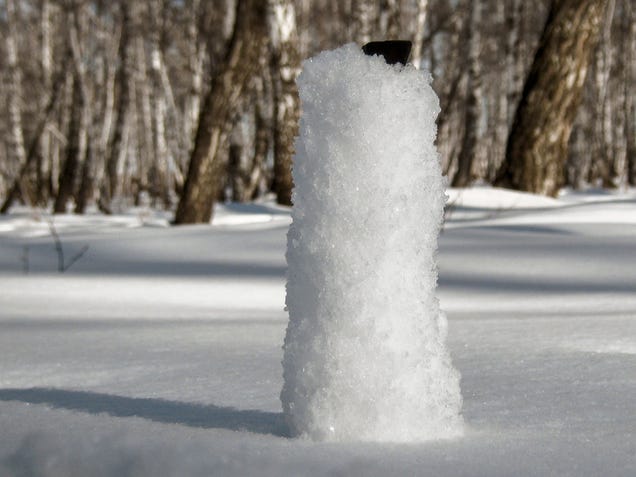| Only 0.02% of last year's huge Chelyabinsk Meteor was ever recovered --- most of it vaporized or scattered into unrecoverable particles --- but scientists are still learning from it.
For example: When hot meteorite fragments hit snow, they melt a vertical shaft or tunnel to the ground. The melted walls of the shaft re-freeze, and the resulting ice wall is denser than the surrounding snow. When the lighter snow melts, the harder-to-melt ice shaft is temporarily left behind as a hollow, standing cylinder. 
http://space.io9.com/when-a-meteorite-hits-snow-it-forms-a-snow-carrot-ins-1692259034 More: "The February meteor blast over central Russia glowed 30 times brighter than the sun, sunburned observers, and delivered the biggest astronomical punch felt on Earth in a century, report scientists. http://www.upi.com/Science_News/2015/03/22/NASA-data-reveals-mysteries-of-meteor-that-struck-Chelyabinsk-Russia-in-2013/7841427058724/#ixzz3VDKONWoN http://space.io9.com/heres-everything-we-know-about-the-chelyabinsk-meteor-1637134445 |
A mostly personal-interest feed; tech, science and some weird humor thrown in --- just for fun.
Friday, March 27, 2015
Meteorite chunks create "snow carrots" in Russia
Subscribe to:
Post Comments (Atom)
No comments:
Post a Comment